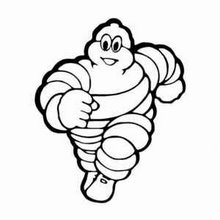Hyundai-Kia betting on futuristic cars
Hyundai-Kia said it will invest 1 trillion won in developing futuristic cars over the next five years, an investment that is 60 percent of the combined research and development budget of the nation's five carmakers.
In a meeting with Commerce Minister Chung Sye-kyun and presidents of other automakers last week, Hyundai Motor president Choi Jae-kook and Kia Motors president Cho Nam-hong announced their R&D investment plan in addition to 10.2 trillion won to support smaller partner companies. The ministry plans to spend 210 billion won on developing cars of the future by 2010.
Development of less costly environment-friendly cars, which are expected to replace automobiles that run on fossil fuels in about a decade, is a pressing task for all global carmakers.
Fuel-cell version of the Hyundai Tucson SUV
In addition to more fuel-efficient diesels, fuel-cell autos that run on electricity generated by a chemical reaction between hydrogen and oxygen and gasoline-electric hybrids are the two major objectives. Toyota Motors Corp. recently announced that it will make gasoline-electric hybrid versions for all of its models by 2012. Toyota, which accounted for 80 percent of the 300,000 hybrids sold around the world last year, hopes to quadruple its hybrid sales to a million vehicles and cut their manufacturing costs by up to 30 percent.
While automakers such as General Motors, DaimlerChrysler and BMW concentrated on fuel-cells, which are anticipated to be the ultimate future of automobiles, Japanese Toyota Motors and Honda Motor successfully mass-produced hybrids, a technology once considered merely as an intermediate.
Hyundai-Kia has been working on both since the early 1990s.
Hybrids
A hybrid car uses gasoline and electric batteries to generate energy to power internal combustion engines and electric motors. A gasoline-electric hybrid is started and accelerated by an electric motor to consume less fuel while able to generate high power. Modern mass-produced hybrids recharge their electric batteries while operating. When cruising or idling, some of the output of the combustion engine is fed to the electric motor to charge the batteries.
Hyundai began accumulating technological know-how on electric power systems and automobile energy management by developing electric versions of the Sonata midsize and the Excel compact in the 1990s.
The carmaker test-operated hybrid buses during the 2002 Korea-Japan World Cup and delivered 50 Click hybrids to the Ministry of Environment in October 2004. The Click hybrids, which were used by the National Police Agency, were up to 50 percent more fuel-efficient than the gasoline version, according to the automaker.
Last year, Hyundai-Kia sold 350 hybrid versions of the Verna and Pride compacts to the central and regional self-governments. Another 418 hybrids are scheduled to be provided this year.
The company plans to mass produce midsize hybrids in 2007, aiming to reach an annual production levels of 300,000 hybrids by 2010.
Fuel-cell vehicles
In the earlier stages of development, fuel-cell vehicles depended entirely on hydrogen to generate power. Now most carmakers are focusing on a system that uses an electric motor as well.
In 2000, Hyundai embarked on an all-out development by joining the California Fuel Cell Car Partnership. Hyundai's first-generation Santa Fe FCEV won awards in 2001 and 2003 at the Michelin Challenge Bibendum, an international competition for alternative energy vehicles.
In 2003, Hyundai and UTC Fuel Cells agreed to collaborate on Hyundai's second-generation fuel cell vehicles based on the new Tucson and Sportage sport utility vehicle platforms.
The most important technology for a fuel-cell vehicle involves the storage of high-pressure hydrogen for a longer driving range. Hyundai is currently working on a 700 mmHg compressed hydrogen tank.
In April 2004, Hyundai was chosen as one of the contractors for the U.S. government's five-year test-operation project for fuel-cell vehicles.
Early last year, the automotive group set up its first hydrogen fueling station in Chino, California under a partnership with UTC Fuel Cells and ChevronTexaco.
The station produces 15 kilograms of hydrogen per day from natural gas, and has the capacity to charge 30 cars a day, taking less than two minutes to fill each vehicle, Hyundai said.
Over the next five years, Hyundai Automotive Group plans to operate 16 Hyundai Tucson and 16 Kia Sportage hydrogen-electric vehicles in major U.S. cities and build five more hydrogen stations in California and Michigan with the two partners.
The Tucson fuel-cell, which took two years of research and development, was unveiled at the 2004 Geneva Motor Show and New York Motor Show.
Unlike its predecessor Santa Fe, that had the fuel-cell system under its body, the Tucson FCEV's fuel-cell system was fitted in the engine compartment. Its output of 80 kilowatts was also higher than the 75-kilowatt Santa Fe. The Tucson FCEV can be started at freezing temperatures.
(sophie@heraldm.com)
2006.04.06
Thursday, April 06, 2006
Subscribe to:
Post Comments (Atom)














No comments:
Post a Comment